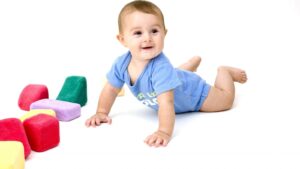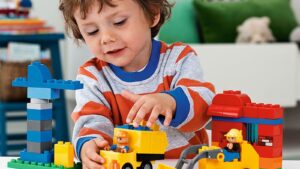Brain Development Toys for 1-Year-Olds
The first year of a child’s life is a magical time filled with discoveries and milestones. Choosing the right toys can significantly impact their cognitive and physical development. Let’s dive into the world of brain development toys perfect for 1-year-olds, helping you nurture your toddler’s growth.
Why Brain Development Matters in Early Childhood
The Importance of Neural Growth at One Year
During the first year of life, a baby’s brain develops at an astonishing rate. This period is crucial for forming neural connections that shape memory, problem-solving abilities, and overall intelligence. By offering stimulating toys, you’re providing the building blocks for a bright future.
Benefits of Stimulating Play for Toddlers
Play isn’t just fun; it’s a powerful learning tool. Engaging in sensory activities enhances brain plasticity, improves hand-eye coordination, and promotes emotional bonding. Toys designed for brain development ensure that playtime is both enjoyable and educational.

Key Features to Look for in Brain Development Toys
Safety Considerations for One-Year-Olds
Safety is paramount when selecting toys. Look for non-toxic materials, rounded edges, and parts too large to swallow. Always ensure the toy meets safety standards like ASTM or EN71 certification.
Toys That Promote Sensory Exploration
Sensory toys stimulate a baby’s sense of touch, sight, and hearing. Toys with varied textures, bright colors, or soft lights engage multiple senses simultaneously, fostering better brain connectivity.
Encouraging Problem-Solving and Fine Motor Skills
Look for toys that challenge your baby to think, such as stacking rings or puzzles. These activities sharpen their problem-solving abilities while improving dexterity and fine motor skills.
Best Categories of Brain Development Toys for 1-Year-Olds
Sensory Toys for Tactile Stimulation
Sensory balls, textured blocks, and soft rattles can captivate a baby’s sense of touch and enhance their curiosity. Water-filled mats or sensory boards with mirrors and bells are also excellent options.
Stacking and Sorting Toys for Cognitive Growth
Toys like stackable cups or shape sorters teach cause-and-effect relationships and encourage logical thinking. They also improve spatial awareness as babies learn to match and fit objects correctly.
Musical Toys for Auditory Learning
Babies love sounds! Instruments like baby pianos, xylophones, or toys with pre-recorded lullabies promote auditory skills and rhythm recognition, making them ideal for early musical exposure.
Push and Pull Toys for Motor Skills
Push and pull toys, such as wooden walkers or cars with strings, strengthen leg muscles and balance, helping your toddler take confident steps.
Interactive Books for Language and Visual Stimulation
Books with textures, sounds, or flaps improve language acquisition and visual tracking. Reading these books together also fosters an early love for storytelling.

Top 10 Brain Development Toys for 1-Year-Olds
Best Overall Toy for Brain Development
A stacking and nesting toy set offers versatility. It supports motor skills, spatial reasoning, and imaginative play.
Best Budget-Friendly Options
Rattles with different textures and colors are affordable and effective in stimulating sensory development.
Premium Choices for Advanced Features
Electronic activity centers with lights, music, and interactive buttons provide a multi-sensory experience but come at a higher price.
DIY and Budget-Friendly Toy Ideas
Homemade Sensory Bottles
Create sensory bottles using recycled plastic bottles filled with water, glitter, or beads. They are mesmerizing and inexpensive.
Repurposing Household Items for Brain-Building Play
Everyday items like pots and pans, cardboard boxes, or plastic containers can transform into tools for creativity and motor skill development.
Simple Crafts for Bonding and Learning
Try activities like finger painting or creating simple shakers using rice and jars. These promote creativity while strengthening your bond with your toddler.
Benefits of Playing With Your Toddler
Building a Stronger Parent-Child Connection
Interactive play strengthens your relationship, creating a safe and loving environment for learning. Shared play fosters trust and boosts your child’s confidence.
Encouraging a Love for Learning From an Early Age
When play is fun and enriching, it sets the stage for a lifelong love of exploration and discovery. Early positive experiences with toys can instill curiosity and enthusiasm for future challenges.
Tips for Choosing the Right Toys
Aligning Toys With Developmental Milestones
Choose toys appropriate for your child’s developmental stage. At one year, focus on toys that improve hand coordination, encourage standing, or aid in language development.
Adapting to Your Toddler’s Interests
Pay attention to what fascinates your child. If they’re drawn to music, choose a baby keyboard. If they love colors, try vibrant stacking rings.
Conclusion: Setting the Stage for Lifelong Learning
Toys are more than just playthings—they’re tools that shape your child’s future. By choosing brain development toys that cater to their needs and interests, you can nurture their growth and spark a lifelong love of learning.
FAQs
What kind of toys are best for 1-year-olds?
Toys that promote sensory exploration, motor skills, and problem-solving are ideal, such as stacking rings, musical instruments, and sensory balls.
How can toys improve a baby’s brain development?
Toys stimulate the senses, challenge problem-solving abilities, and encourage movement, which helps form crucial neural connections.
Are expensive toys worth the investment?
Not necessarily. Many affordable toys or DIY options can be just as effective in promoting brain development.
How can I ensure the safety of toys for my toddler?
Always check for non-toxic materials, appropriate size, and compliance with safety standards like ASTM or EN71.
Can non-toy items be used for brain development?
Absolutely! Household items like containers or cardboard boxes can spark creativity and learning with a little imagination.

